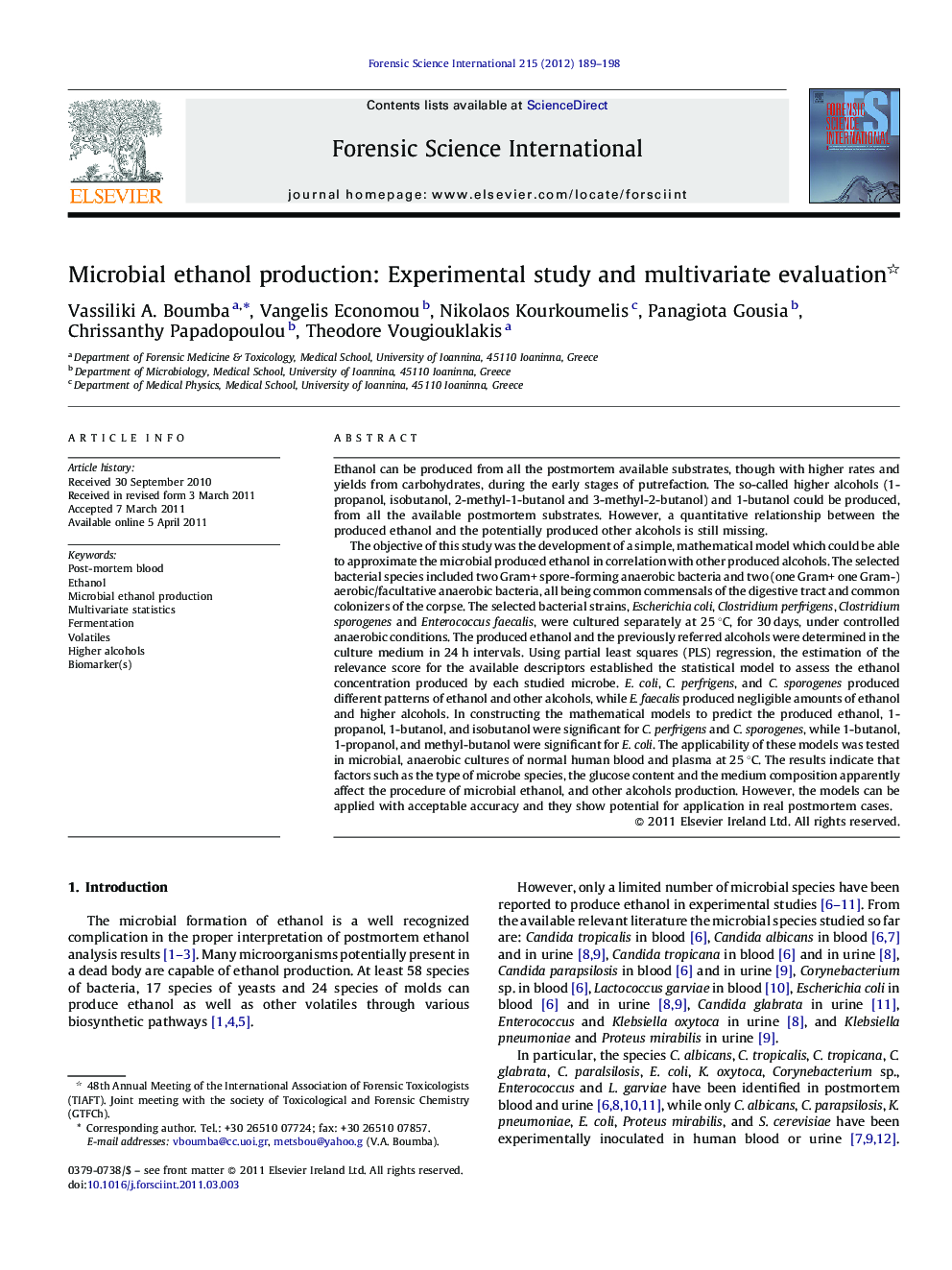| کد مقاله | کد نشریه | سال انتشار | مقاله انگلیسی | نسخه تمام متن |
|---|---|---|---|---|
| 96450 | 160463 | 2012 | 10 صفحه PDF | دانلود رایگان |

Ethanol can be produced from all the postmortem available substrates, though with higher rates and yields from carbohydrates, during the early stages of putrefaction. The so-called higher alcohols (1-propanol, isobutanol, 2-methyl-1-butanol and 3-methyl-2-butanol) and 1-butanol could be produced, from all the available postmortem substrates. However, a quantitative relationship between the produced ethanol and the potentially produced other alcohols is still missing.The objective of this study was the development of a simple, mathematical model which could be able to approximate the microbial produced ethanol in correlation with other produced alcohols. The selected bacterial species included two Gram+ spore-forming anaerobic bacteria and two (one Gram+ one Gram-) aerobic/facultative anaerobic bacteria, all being common commensals of the digestive tract and common colonizers of the corpse. The selected bacterial strains, Escherichia coli, Clostridium perfrigens, Clostridium sporogenes and Enterococcus faecalis, were cultured separately at 25 °C, for 30 days, under controlled anaerobic conditions. The produced ethanol and the previously referred alcohols were determined in the culture medium in 24 h intervals. Using partial least squares (PLS) regression, the estimation of the relevance score for the available descriptors established the statistical model to assess the ethanol concentration produced by each studied microbe. E. coli, C. perfrigens, and C. sporogenes produced different patterns of ethanol and other alcohols, while E. faecalis produced negligible amounts of ethanol and higher alcohols. In constructing the mathematical models to predict the produced ethanol, 1-propanol, 1-butanol, and isobutanol were significant for C. perfrigens and C. sporogenes, while 1-butanol, 1-propanol, and methyl-butanol were significant for E. coli. The applicability of these models was tested in microbial, anaerobic cultures of normal human blood and plasma at 25 °C. The results indicate that factors such as the type of microbe species, the glucose content and the medium composition apparently affect the procedure of microbial ethanol, and other alcohols production. However, the models can be applied with acceptable accuracy and they show potential for application in real postmortem cases.
Journal: Forensic Science International - Volume 215, Issues 1–3, 10 February 2012, Pages 189–198